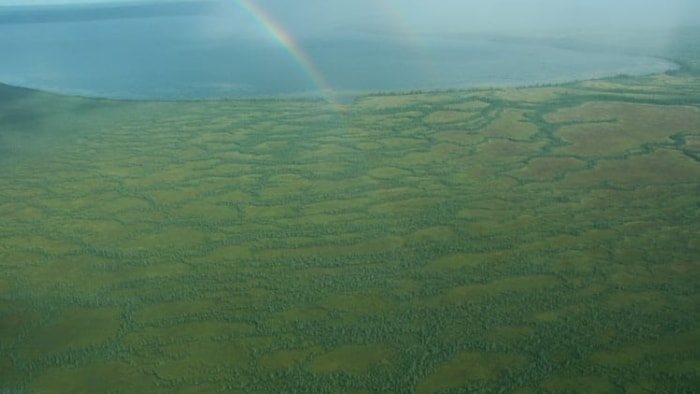Open in full screen mode The Lake McClelland area is underlain by peat two to eight meters deep, accumulated over 11,000 years. This peat can store up to 35 million tonnes of carbon dioxide. (Archive photo) Radio-Canada Feature being tested Log inCreate my account Speech synthesis, based on artificial intelligence, makes it possible to generate spoken text from written text. The Regulatory Agency for Alberta Energy (AER) will not review the authorization granted to oil company Suncor to expand one of its tar sands mines in a wetland in Fort Hills, in the north of the province. This decision paves the way for the oil company, which plans to extract a quantity of bitumen estimated at 1 billion barrels. The decision follows a request from the Alberta Wilderness Association for the AER to review the approvals granted to the oil industry, given the harmful effects that the project could have on the ecosystem. The AER suspended its authorizations while it investigated the concerns raised. However, in its response, it argues that the Alberta Wilderness Association has not produced new information justifying a re-evaluation of its initial decision. The law states that the regulatory authority may confirm, modify, suspend or revoke its decisions, with or without a hearing, if new and compelling evidence is presented to it. In a press release, the conservation organization said it was extremely disappointed, but not surprised by the regulatory authority's decision. We are disappointed and frustrated, confides Phillip Meintzer, its spokesperson. Barb Faichney, an elder from the Fort McKay First Nation, which is located near the project, says she is equally disappointed, because she fears that the project will irreparably damage the natural environment, where a her family's trapline. She also worries about the future: I don't see how my children or my grandchildren could live there in the future. Barb Faichney is also a member of the sustainability committee which advises Suncor on its sustainability plan ;exploitation and she plans to continue her work there. The project area is home to 20 species of rare or endangered plants and more than 200 species of migratory birds, including the endangered whooping crane. In addition, Lake McClelland is underlain by peat 2 to 8 meters deep, accumulated over 11,000 years. This peat stores between 8 and 35 million tonnes of carbon dioxide. The Alberta Wilderness Association has called for the entire area to be protected, noting that it represents only a tiny portion of Alberta's 4,750 square kilometers of mineable oil sands. Additionally, the Lake McClelland complex was excluded from development in 1996 due to its environmental value. This exclusion was lifted in 2002 for the portion of the wetland located within an oil sands concession then owned by True North Energy. 
Suncor's Fort Hills mine will extract an estimated 1 billion barrels of bitumen. (File photo)
To protect the undeveloped wetland while the remainder is drained and excavated, Suncor provides a complex array of wells and pumps to control and monitor water levels and chemistry. It also undertakes to install a wall nearly 14 kilometers long and 20 to 70 meters deep to separate the two halves.
We we are committed to maintaining the ecological diversity and function of the unexploited part, says Leithan Slade, its spokesperson.
The operating plan is expected to evolve as technology advances.
A quote from Leithan Slade, Suncor spokesperson
The oil company maintains that the AER's decision demonstrates that the plan it proposed is rigorous and technically sound.
In its submission to the regulator, the Alberta Wilderness Association cites wetlands experts who say the technology has not been tested to ensure its effectiveness.
They add that such structures are known for their leaks and that the exploited half of the wetland is susceptible to significantly modify the unexploited part.
However, this was not enough to convince the provincial regulatory authority.
With information from Paula Duhatschek and The Canadian Press

